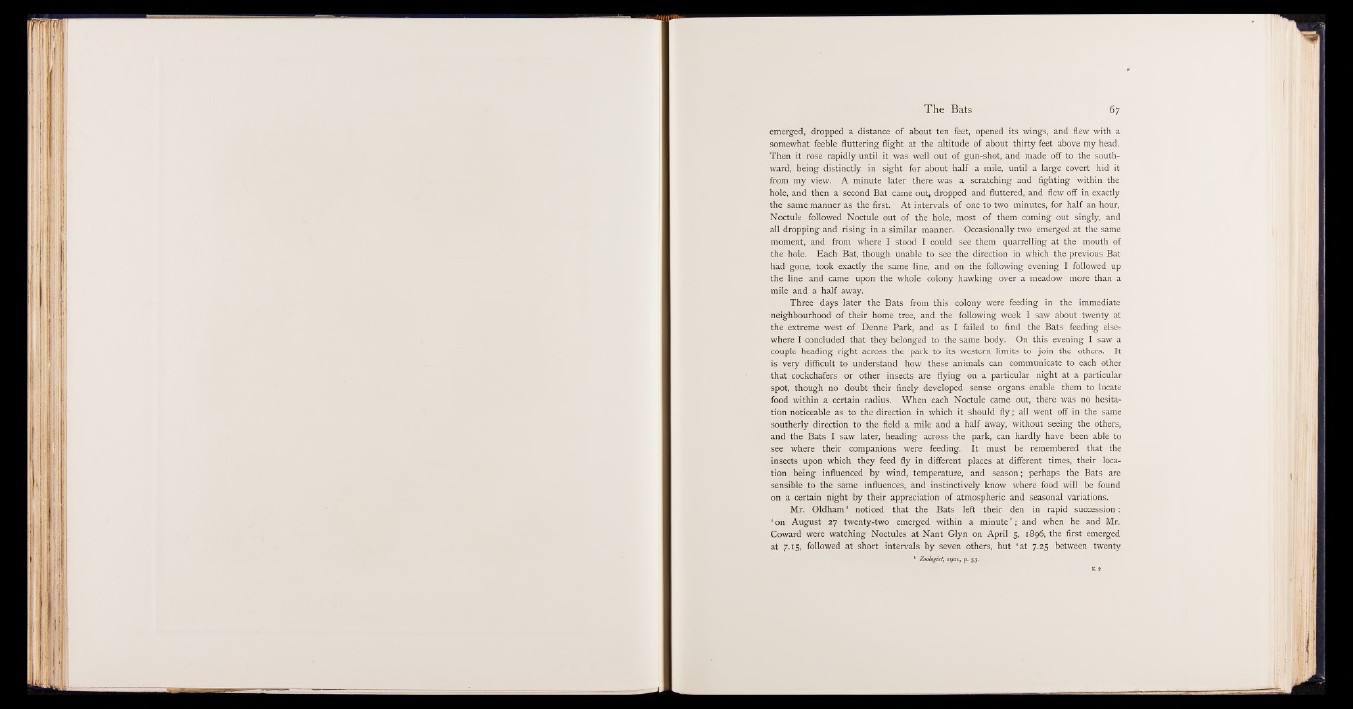
The Bats 67
emerged, dropped a distance of about ten feet, opened its wings, and flew with a
somewhat feeble fluttering flight at the altitude of about thirty feet above my head.
Then it rose rapidly until it was well out of guii-shot, and made off to the -southward,
being distinctly in sight for about half a mile, until a large covert hid it
from my view. A minute later there was a scratching and fighting within the
hole, and then a second Bat came out, dropped and fluttered, and flew off in exactly
the same manner as the first. At intervals of one to two minutes, for half an hour,
Noctule followed Noctule out of the hole, most of them coming out singly, and
all dropping and rising in a similar manner. Occasionally two emerged at the same
moment, and from where I stood I could see them quarrelling at the mouth of
the hole. Each Bat, though unable to see the direction in which the previous Bat
had gone, took exactly the same line, and on the following evening I followed up
the line and came upon the whole colony hawking over a meadow more than a
mile and a half away.
Three days later the Bats from this colony were feeding in the immediate
neighbourhood of their home tree, and the following week I saw about twenty at
the extreme west of Denne Park, and as I failed to find the Bats feeding elsewhere
I concluded that they belonged to the same body. On this evening I saw a
couple heading right across the park to its western limits to join the others. It
is very difficult to understand how these animals can communicate to each other
that cockchafers or other insects are flying on a particular night at a particular
spot, though no doubt their finely developed sense organs enable them to locate
food within a certain radius. When each Noctule came out, there was no hesitation
noticeable as to the direction in which it should fly ; all went off in the same
southerly direction to the field a mile and a half away, without seeing the others,
and the Bats I saw later, heading across the park, can hardly have been able to
see where their companions were feeding. It must be remembered that the
insects upon which they feed fly in different places at different times, their location
being influenced by wind, temperature, and season; perhaps the Bats are
sensible to the same influences, and instinctively know where food will be found
on a certain night by their appreciation of atmospheric and seasonal variations.
Mr. Oldham1 noticed that the Bats left their den in rapid succession:
‘ on August 27 twenty-two emerged within a minute ’ ; and when he and Mr.
Coward were watching Noctules at Nant Glyn on April 5, 1896, the first emerged
at 7.15, followed at short intervals by seven others, but ‘ at 7.25 between twenty
1 Zoologist\ 1901, p. 53.